File exchange from Linux
Desktop way
FileZilla
This FTP client is widely used and supports the SFTP protocol. Installation on Debian or Ubuntu can be done with a single command:
sudo apt install filezillaAfter that you can open it from the main menu. Enter LeaderGPU server’s IP address in Host field, credentials in Username and Password fields. As port number use standard SSH port 22 and click the Quickconnect button.
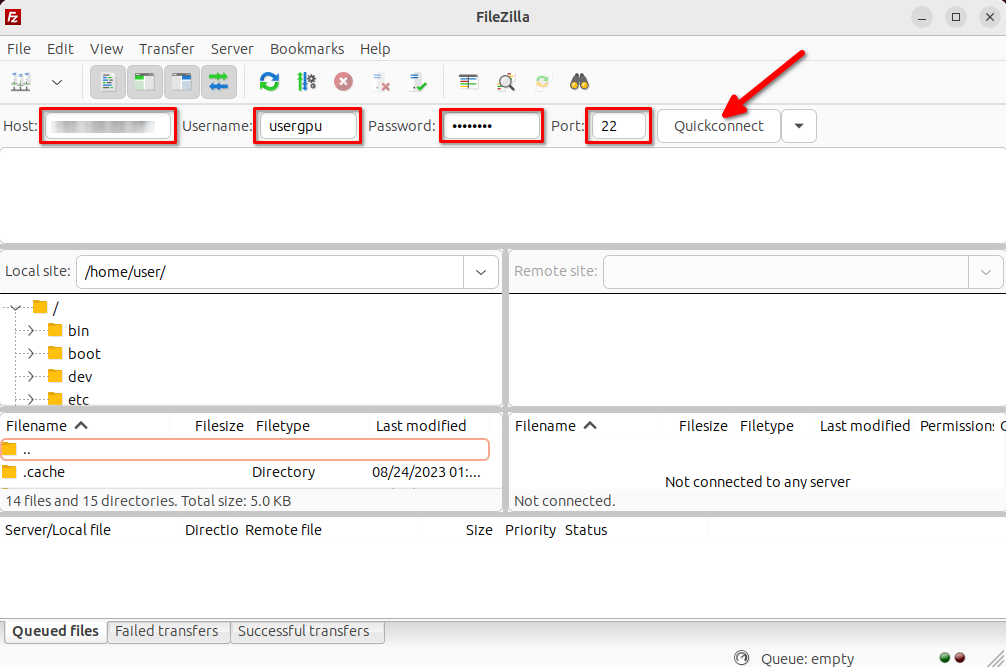
When you first connect, the system will ask you to confirm trust in the remote server and present its SHA256 digital fingerprint. Check the Always trust… box and respond affirmatively by clicking OK:
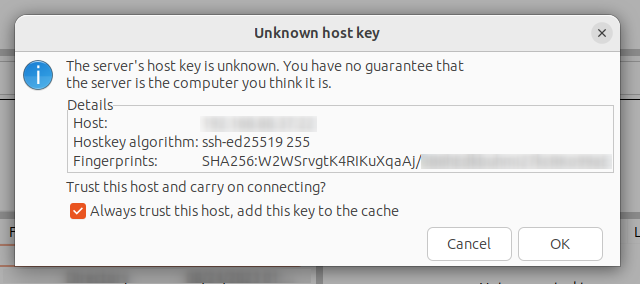
After establishing a connection, the files on your local computer will appear on the left side of the window, and the files on the remote server on the right. You can easily transfer files via drag and drop:
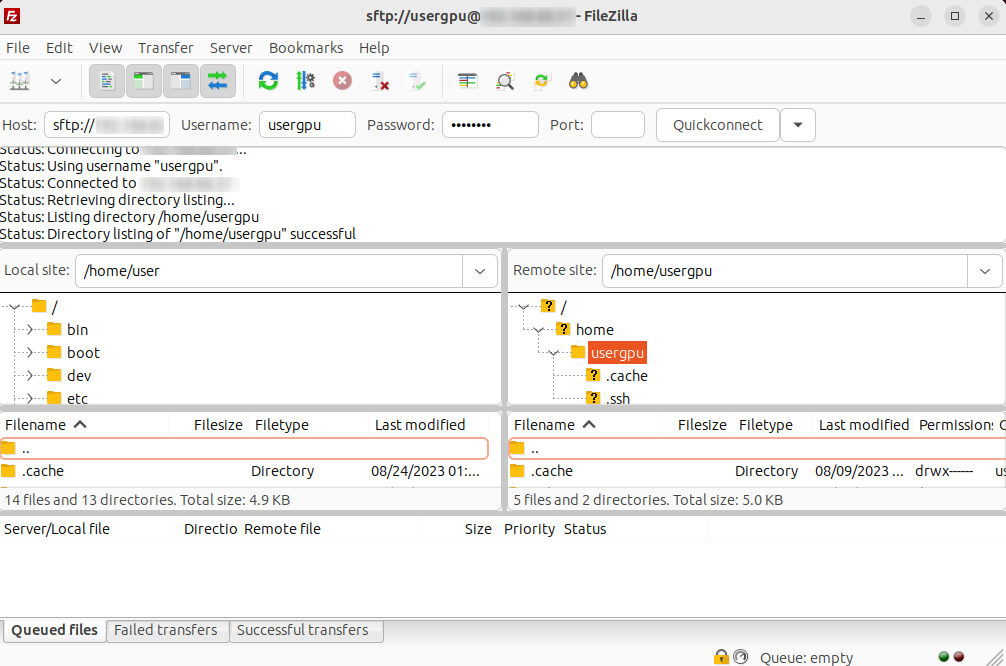
gFTP
This popular cross-platform FTP/SFTP client is widely used on Linux and Unix operating systems. Here’s how you can install in on Debian or Ubuntu:
sudo apt install gftpThe same as a FileZilla you must enter the Host, Port, User, Pass and choose SSH2 in a protocol selection. After that click the connect button:
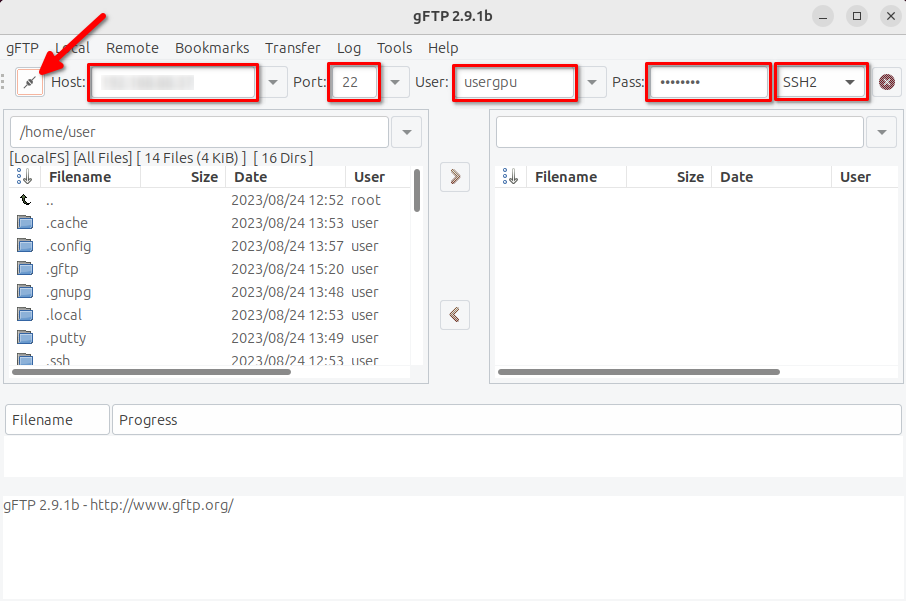
Continue the connection process by clicking the Yes button:
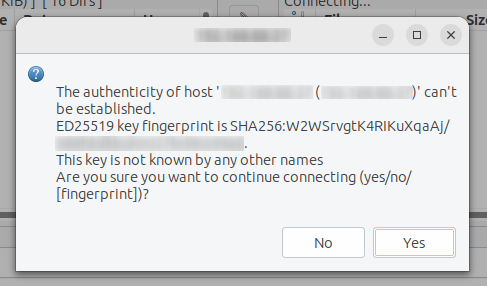
Now you have the ability to manage files on the remote system. You can also upload or download files by dragging them:
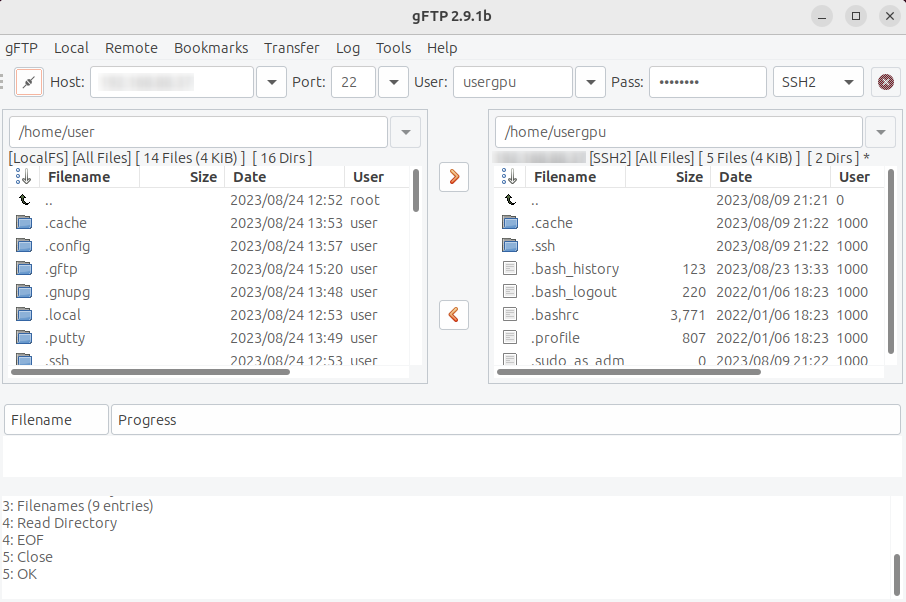
Muon (ex-Snowflake)
For example we install it in Ubuntu 23.04. Start by downloading the installation deb-package:
wget https://github.com/subhra74/snowflake/releases/download/v1.0.4/snowflake-1.0.4-setup-amd64.debThen proceed with the installation:
sudo dpkg -i snowflake-1.0.4-setup-amd64.debYou received an error stating that the required package openjdk-11-jre isn’t installed on your system. Let’s try to resolve it:
sudo apt install openjdk-11-jreAt this step, you encounter another error indicating that some dependencies are broken. Fix it with the standard command:
sudo apt --fix-broken installNow you can start the Snowflake SSH/SFTP client from the main menu. Click on New connection button:
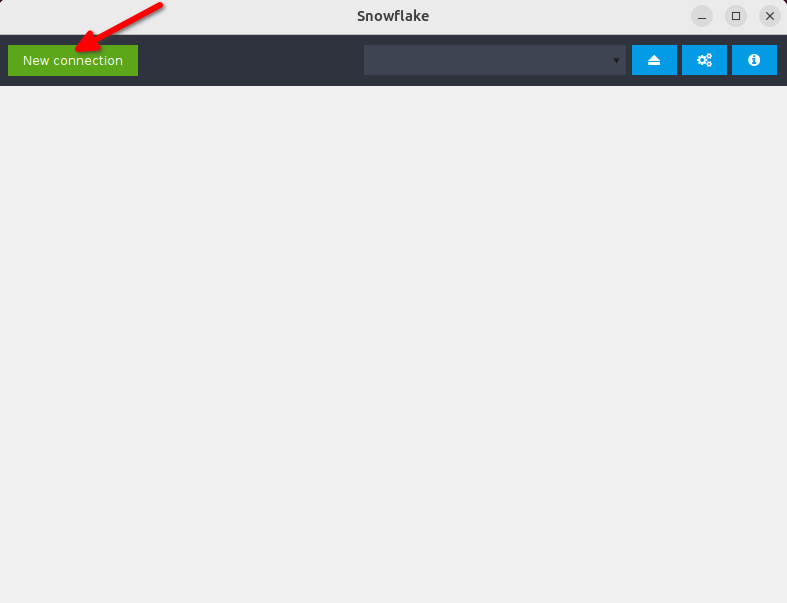
In a Session manager window fill all fields marked by a red frame and finally click on the Connect button:
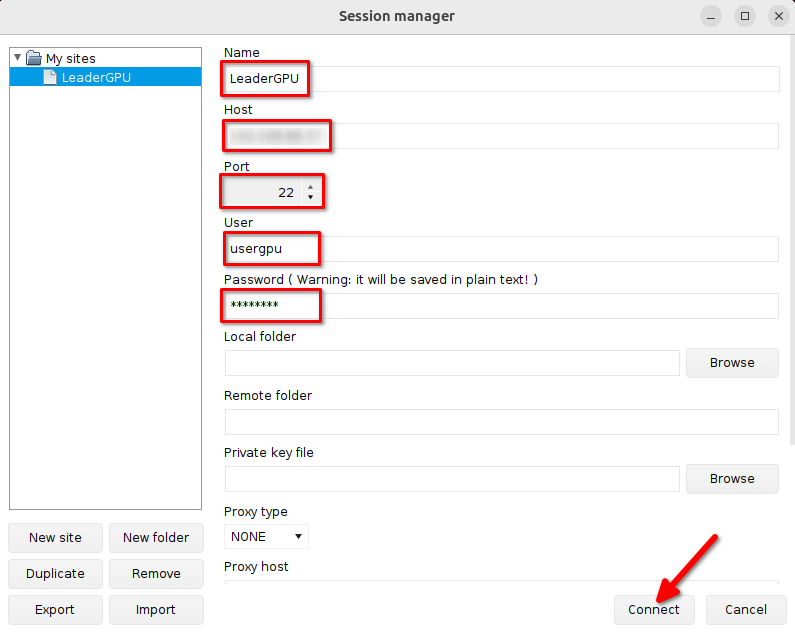
Please confirm the connection by clicking Yes:
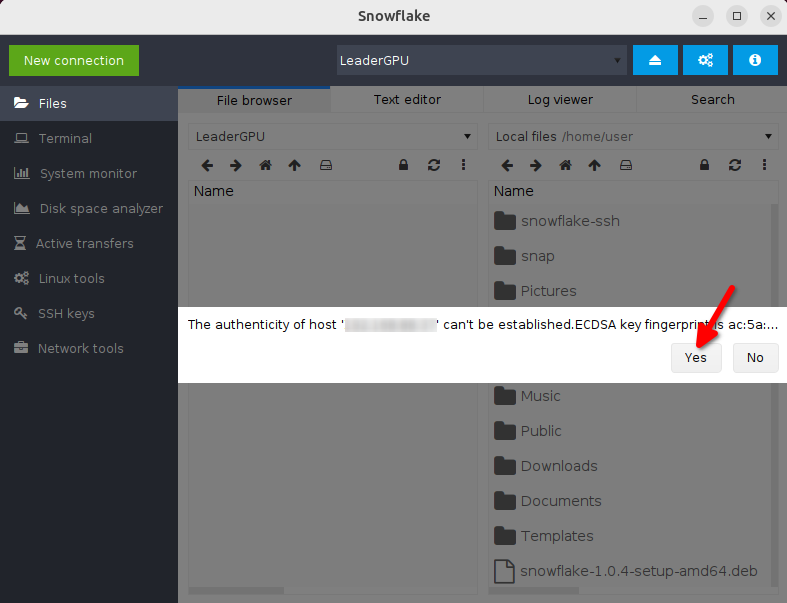
With Muon, you can transfer files from your local computer to a remote server and take advantage of its additional features. The versatile application can function as an access terminal, allowing for easy monitoring of processes and disk space usage simultaneously:
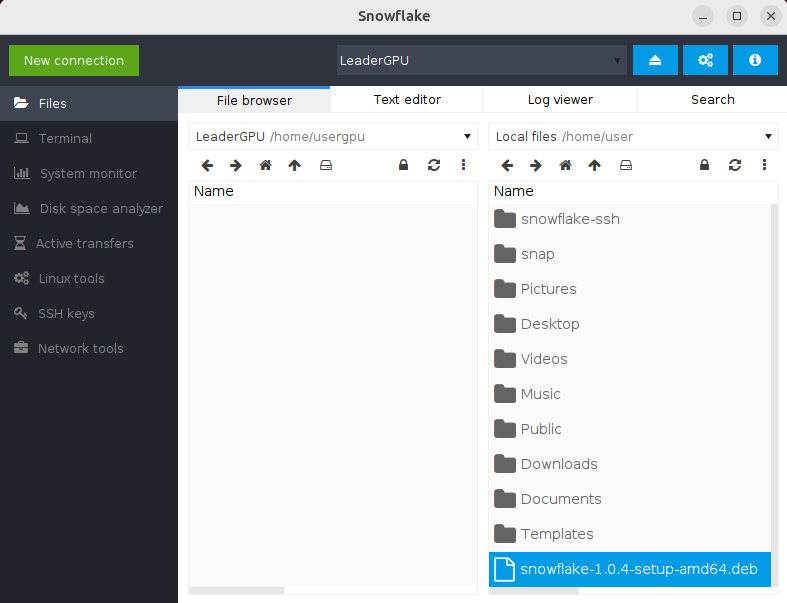
CLI way
SCP
SCP (Secure copy) is a widely used command-line utility for securely copying files and directories. It allows you to transfer files between a local system and a remote server, or between two remote servers. The syntax is straightforward and easy to use.
scp user@server1:/file/or/directory user@server2:/file/or/directorywhere:
- user@server1 is a source server. You can send data from this server to another.
- user@server2 is a destination server. This is a target server to receive data.
Let's say a few words about security. SCP relies entirely on the security of the SSH protocol and can be accessed using either a traditional password or an SSH key.
Rsync
This utility is an improved alternative to SCP. Its purpose is to synchronize files and directories between servers with minimal network traffic. Unlike SСP, this utility must be installed on both servers. This can be easily done with one command:
sudo apt -y install rsyncBasic syntax is:
rsync [options] [source] [destination]The main useful set of options is -avh. It allows for the recursive copying of files (option a), meaning it can copy entire directories and their contents. Option v provides additional information during the copy process, including file sizes and transfer speeds. This information is displayed in a human-readable format (option h), making it easier to understand. For example you can make SSH-connection to source server and execute command like this:
rsync -avh /home/usergpu/example.file usergpu@remote_server:/remote/directoryFile with name example.file will be synchronized with the remote server. Also you can use this command to sync directories.
See also:
Updated: 28.03.2025
Published: 24.04.2024





